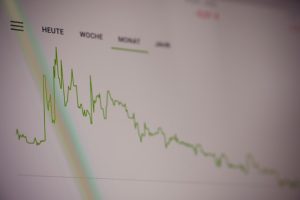Forex and CFDs are two financial instruments that have become increasingly popular in recent years. Both instruments are used by traders to speculate on the movement of various financial assets, such as currencies, stocks, and commodities.
Forex, also known as foreign exchange or currency trading, is the largest financial market in the world, with a daily turnover of over $5 trillion. It involves buying and selling different currencies with the aim of generating a profit from the fluctuations in their exchange rates. Forex trading is typically done through a broker or a financial institution, and traders can access the market 24 hours a day, five days a week.
CFDs, or contracts for difference, are financial derivatives that allow traders to speculate on the price movements of underlying assets, such as stocks, indices, and commodities, without actually owning the assets themselves. CFDs are typically traded through online platforms offered by brokers, and they offer leverage, which means traders can control larger positions with smaller amounts of capital.
Both Forex and CFDs offer a range of benefits to traders, including high liquidity, low transaction costs, and the ability to profit from both rising and falling prices. However, they also come with significant risks, including the potential for significant losses and the need for careful risk management.
One of the key differences between Forex and CFDs is the underlying assets that are traded. Forex is focused solely on currency pairs, while CFDs can be used to trade a wide range of assets, including stocks, commodities, and indices. This means that traders who are interested in a broader range of assets may find CFDs to be a more suitable option.
Another key difference between the two instruments is the way in which they are traded. Forex trading is done through a decentralized network of banks and financial institutions, while CFDs are traded through online platforms offered by brokers. This means that Forex traders may have more control over their trades, as they can choose which banks or financial institutions they want to deal with. On the other hand, CFD traders may have access to more advanced trading tools and features, such as charting and technical analysis tools, which can help them make more informed trading decisions.
Regardless of the instrument chosen, traders who wish to trade Forex or CFDs should be aware of the risks involved and should have a solid understanding of the underlying market and the tools and strategies used in trading. This includes understanding the concept of leverage, which can magnify both profits and losses, and the need for careful risk management, which can help traders minimize their losses and protect their capital.
In conclusion, Forex and CFDs are two financial instruments that offer traders the opportunity to profit from the movement of various financial assets. While they offer a range of benefits, including high liquidity and low transaction costs, they also come with significant risks and require careful risk management. Traders who are interested in trading Forex or CFDs should take the time to learn about the underlying market and the tools and strategies used in trading, and should always be prepared to manage their risk carefully.






